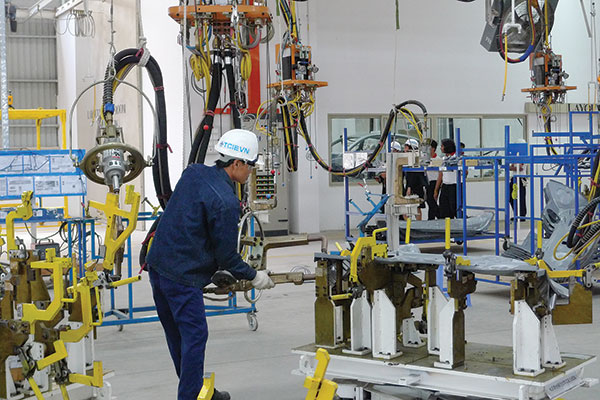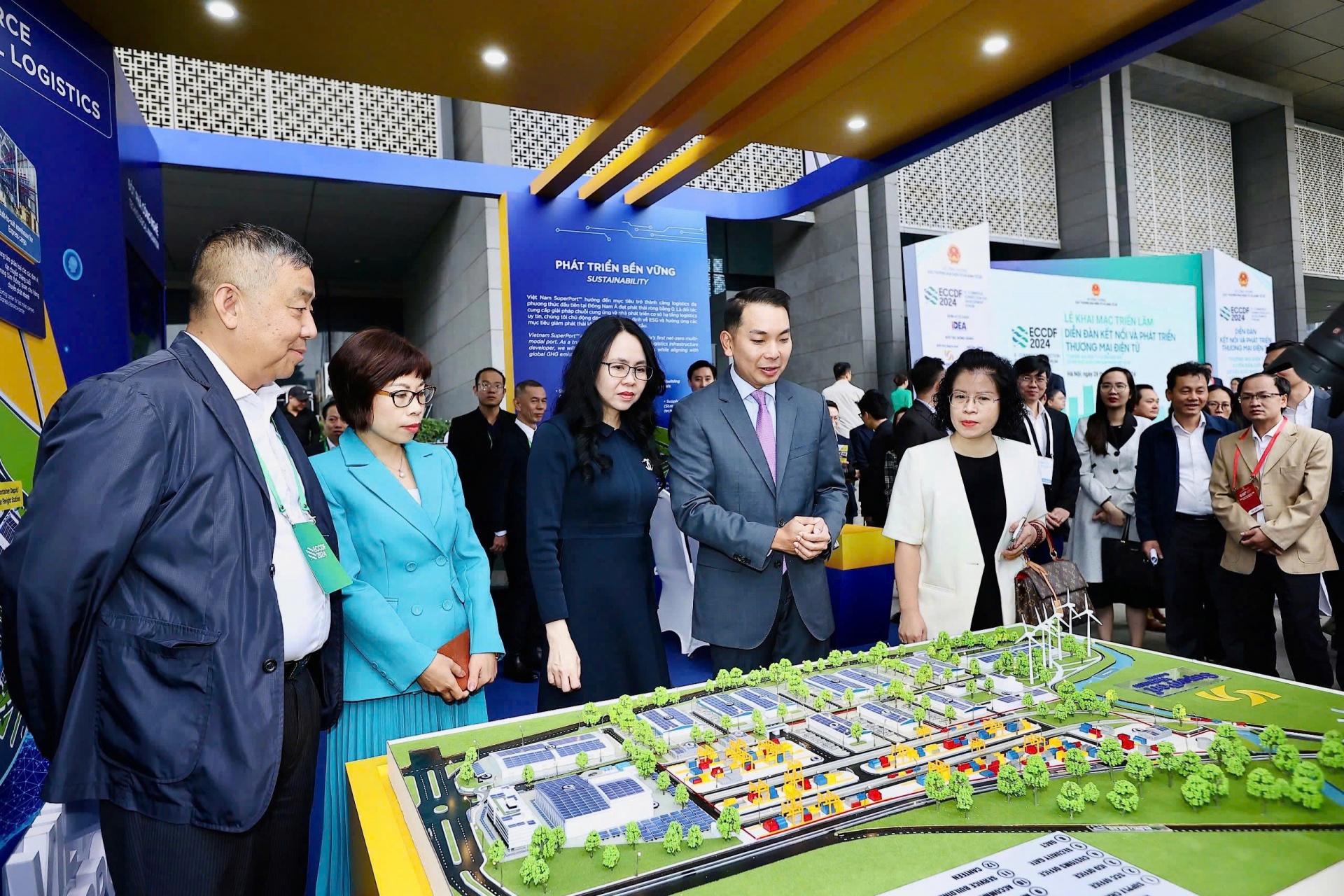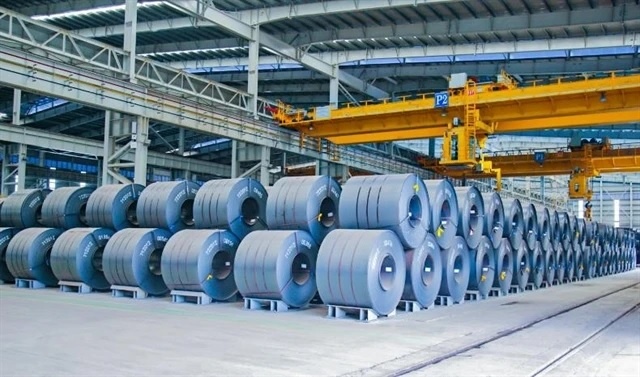Leveraging FDI to stimulate growth

Growth will improve if more efficient use of foreign capital is made
However, authorities also admitted that the growth rate could be much higher from next year if investments were used more effectively. Vietnam Association of Foreign Invested Enterprises chairman Nguyen Mai explains why.
Although the set growth target for 2014-2015 is higher than the 2011-2013 period, Vietnam’s growth rate during 2007-2015 would reach around 5.9 per cent, still far lower than the 7.5 per cent recorded during the 2000-2006 period.
The decline in growth has decreased the national budget and affected businesses, while leaving the property market at a standstill.
The National Assembly’s Economic Committee blamed the low growth on the lack of impetus and the limited economic restructuring performance.
According to economists from the Fulbright teaching programme, out of the four impetuses for growth, the state sector, the domestic private business sector and agriculture were facing great difficulties. Only foreign enterprises were performing well.
Contributions of total factor productivity, an essential component of labour productivity, remained at 22.93 per cent of GDP during 2000-2006. However this rate fell to 6.44 per cent during 2007-2012.
Although the government has actively pursued economic growth and restructuring since 2011, no remarkable gains have been recorded in restructuring public investment, state-owned enterprises and commercial banks. Moreover, thoughts on economic restructuring have almost remained unchanged.
Therefore it is necessary for the government to adopt new approaches to attain growth targets, while it maintains macroeconomic stability, limits inflation and ensures social cohesion.
Economic development for 2014-2015 and 2016-2020 will depend largely on regulatory renewals and economic restructuring under a new model.
Impetus for greater growth
I believe that room still remains for Vietnam to achieve a growth rate higher than the target of 6 per cent for 2014 and 2015. But the answer lies in not increasing investment capital, which has been set to exceed 30 per cent of GDP, but in the more effective usage of such capital.
The primary solution lies with helping struggling enterprises, especially small and medium-sized firms. Despite the government’s tax and credit policies, local production remains stymied. Therefore the government should focus on supporting enterprises. Dead enterprises need to be allowed to go bankrupt, while those firms that have the chance of recovery should be actively aided.
If local production recovers, 2014’s economic growth will be boosted, with more employment and higher wages generated, stimulating local consumption.
Second is to revitalise the currently stagnant property market. Although the government has deployed a bailout package worth VND30 trillion ($1.43 billion) since June, less than 1 per cent of the sum has been disbursed. This has undermined the trust of investors and house buyers. So what are the major reasons behind that? How can that huge subsidy be used in accordance with desired targets and help revitalise the property market?
I think if a large part of this market recovers, economic growth will improve, because the real estate market will not only pump-prime the land and housing sectors, but also have a knock-on effect on other sectors like cement, steel and construction materials.
Third is to leverage the positive impact of foreign direct investment (FDI) on local enterprises more quickly and effectively.
The bright FDI picture this year will lay firm groundwork for Vietnam in the coming two years, in terms of both registered and disbursed FDI. FDI has made a major contribution to the country’s socio-economic development in exports, industrial production, employment generation and budget revenue.
However, it’s obvious you can’t rely on foreign investors to develop Vietnam into an economic powerhouse. FDI should be considered a lever used by Vietnam to develop the economy.
Making best use of FDI
The government should make the most of FDI’s affect on developing support industries, a high-quality workforce and transferring technology.
There’s some discussion about how to leverage FDI into developing our support industries. However, this remains unlikely as we don’t appear to have any idea about how to achieve that. The development of support industries has been discussed for over a decade, but almost nothing has been done.
So we should first work with giants like South Korea’s Samsung in Bac Ninh province, for example, to develop support industries as a typical model which can be multiplied nationwide. We would need to know what they need from support industries via basic groundwork such as surveys. From that we can devise proper incentive policies on tax, credit, technology, and human resources for different firms which can act as suppliers for foreign economic groups.
One of the prime targets in FDI attraction must be turning foreign technology into a tool to develop Vietnam’s economy. Effective solutions must be found to pursue this target.
At present, all localities in Vietnam have their own universities and colleges, and vocational establishments. However, these educational and training establishments offer almost identical courses, many of which are unsuitable to local development priorities. Therefore, education and training reforms need to suit each locality. A diversified and effective educational and training system needs to be developed, tailored to localities.
A better investment climate
Creating a better investment climate is crucial to luring more FDI and revitalising local production and expanding the country’s economic growth.
The Vietnam Chamber of Commerce and Industry’s administrative procedure survey conducted in July 2013 of 8,053 local private enterprises and 1,540 foreign invested enterprises (FIEs) show that enterprises continue to face major administrative obstacles in business registry, tax, land, environment, construction and customs sectors.
Therefore, improvements in the investment and business environment not only include reforms in administrative procedures, anti-corruption measures and reductions in fees and taxes for enterprises, but are also related to the creation of a level playing field for enterprises and investors.
What the stars mean:
★ Poor ★ ★ Promising ★★★ Good ★★★★ Very good ★★★★★ Exceptional
Latest News
More News
- Cambodian King to pay state visit to Vietnam (November 26, 2024 | 09:13)
- Green policies and practices: catalyst or challenge (November 25, 2024 | 09:00)
- Vietnam National Assembly adopts amended Law on Pharmacy (November 22, 2024 | 19:09)
- Rice exports set to break records (November 21, 2024 | 17:53)
- German Quickpack to invest $31.7 million in Long An province (November 20, 2024 | 09:31)
- Reporting still to fully reach global norms (November 18, 2024 | 17:06)
- Trump’s second term impacts sci-tech activities and industry 4.0 technologies (November 18, 2024 | 10:00)
- VLCA 2024 honours corporate governance excellence as listed companies raise the bar (November 18, 2024 | 09:00)
- Trump's trade policies could shape Vietnam's economic outlook: Dragon Capital (November 15, 2024 | 16:56)
- Prioritising corporate governance for Vietnam’s sustainable growth (November 14, 2024 | 16:50)



















 Mobile Version
Mobile Version